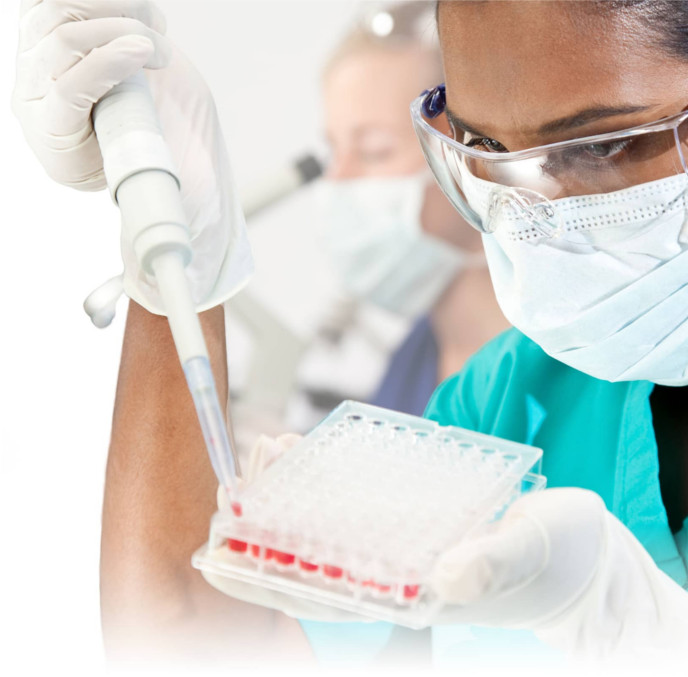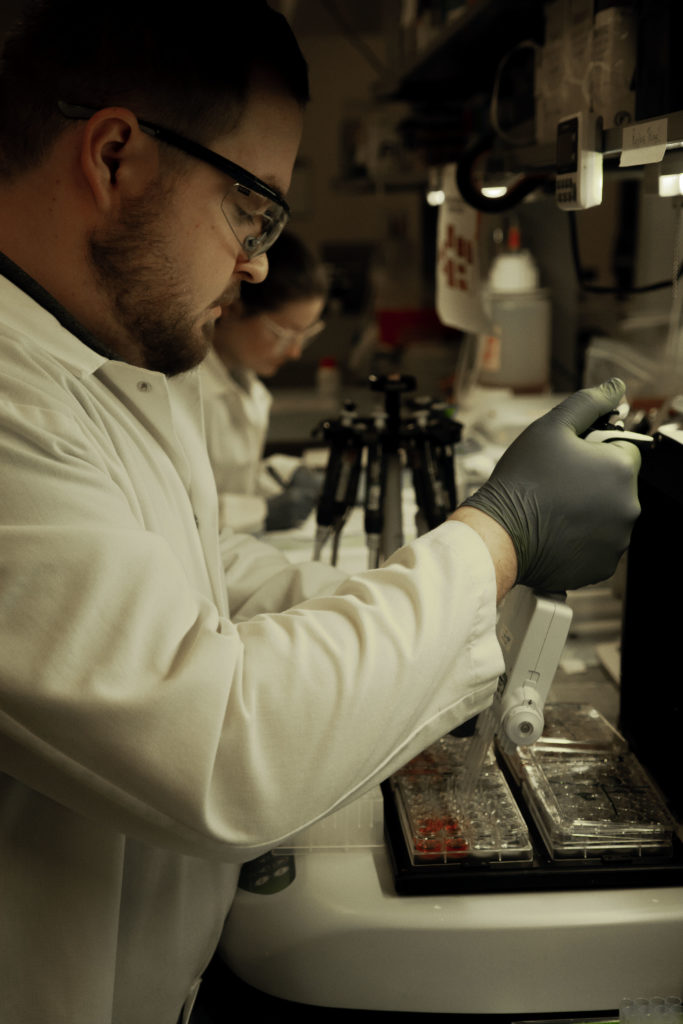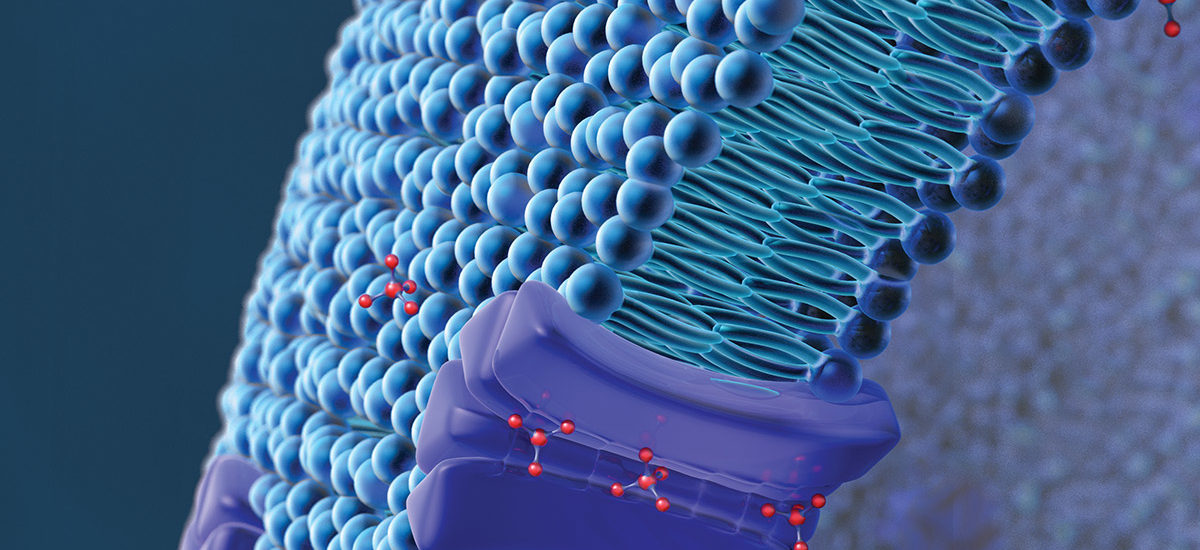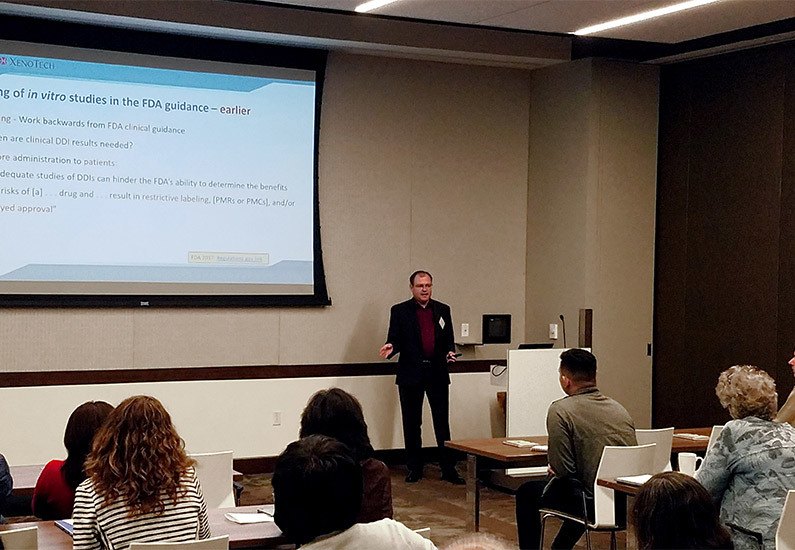
Drug Transporter Substrate Potential Studies
We offer definitive in vitro transporter studies to determine if a drug compound may be a victim (substrate) in transporter-mediated drug-drug interactions (DDI) using validated, industry-accepted test systems for major drug transporters including P-gp, BCR, and others, in compliance with regulatory guidance.
The intention of DDI studies in a preclinical data package is to prevent patients’ unnecessary exclusion from clinical trial participation by predicting potential for harmful interactions with concomitant drugs through a risk-based approach. Part of necessary investigations into DDI potential of a compound focuses on proteins involved in transporting compounds across membranes. Clinically-relevant drug transporters can be found in various tissues such as the intestine, liver, kidney, and brain and can have a significant impact on a drug’s disposition and pharmacokinetics.
Our Approach to Evaluating Drug Transporter Substrate Potential
To address direction from the Food and Drug Administration (FDA) to “determine if the investigational drug is a substrate of a transporter” (In Vitro Drug Interactions Studies— Cytochrome P450 Enzyme- and Transporter-Mediated Drug Interactions: Final Guidance for Industry, FDA 2020), we offer studies designed to evaluate a compound’s substrate (victim) potential with appropriate transporters in studies designed to meet current FDA, European Medicines Agency (EMA), and Pharmaceuticals and Medical Devices Agency (PMDA) expectations for new drug applications.
P-gp & others: FDA-specified transporters for standard investigation of substrate potential of a compound
- ABC/efflux: P-gp and BCRP substrate potential recommended (except for highly-soluble, highly-permeable drugs)
- SLC/uptake: Hepatic (OAT1B1, OATP1B3) and renal (OAT1, OAT3, OCT2, MATE1, MATE2-K) substrate potential should be evaluated based on ADME (absorption, distribution, metabolism, excretion) data if it suggests hepatic uptake/elimination or renal secretion is significant.

In Vitro Substrate Potential Assays We Offer
Test systems and study design are determined by whether the drug transporter is associated with efflux or uptake.
P-gp and BCRP are common efflux (ABC) transporters, and uptake (SLC) transporters include OATs and MATEs. Find more information by transporter type:
SLC (Uptake) Transporter Assays – Substrate & Inhibition
Uptake Transporter substrate potential is measured by comparing the accumulation of the test compound in renal and hepatic transporter-expressing cells versus control cells.
ABC (Efflux) Transporter Assays (BCRP, P-gp) Substrate & Inhibition
Efflux Transporter (BCRP, P-gp) substrate potential assays measure the bidirectional permeability of the test compound across a monolayer of cells (MDCKII-MDR1 or MDCKII-BCRP) in a transwell plate.
Drug Transport-Related Scientific Content
For more information to guide your decision making on timing and individual transporters (such as P-gp and BCRP) to assess, discover our Drug Transporters Decision Tree, a poster comparing of regulatory expectations between FDA, EMA, and PMDA or our extensive collection of transporter-related scientific content.
Additional features of our drug transport study design and a chart of known clinically relevant transporter DDIs can be found on our Drug Transport Services page.
Related Services: Transporter Inhibition Screening
Discovery Plus™ Screening Suite presents medium-throughput alternatives to definitive metabolism & DDI studies through non-GLP, abbreviated versions of our definitive assays. This option is best used for comparison of multiple compounds or to yield preliminary data for definitive in vitro studies.

